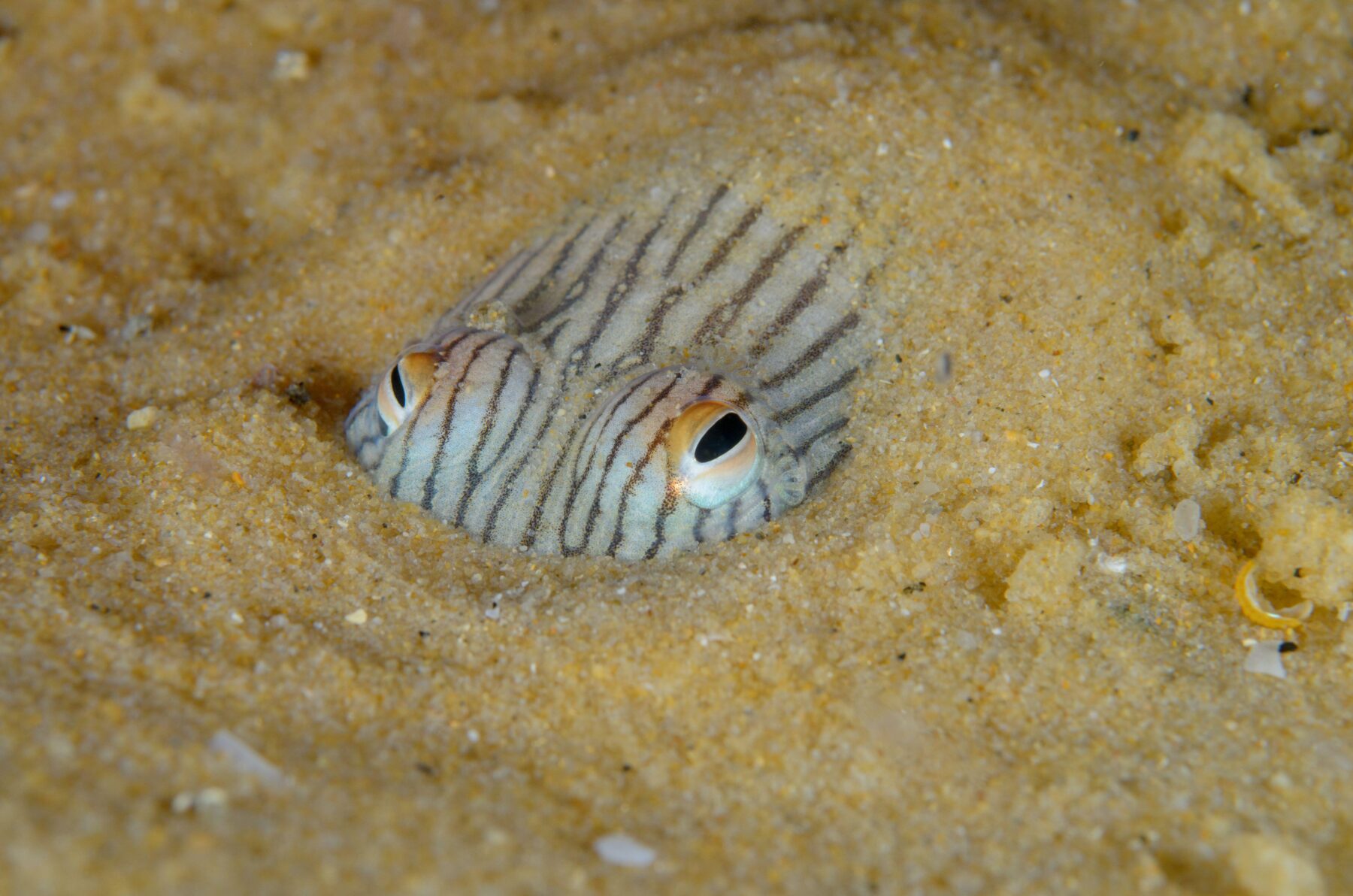The striped pyjama squid is never going back to the office

Bec Crew
Bec Crew

For starters, it’s one of the few known cephalopods that is suspected to be both poisonous and venomous. (If you want to remember the distinction between the two, a good rule of thumb is, ‘If you bite it and you die, it’s poison; if it bites you and you die, that’s venom’.)
Researchers think the flesh of the striped pyjama squid (Sepioloidea lineolata) – also known by its unhelpfully delicious nickname, the striped dumpling squid – is poisonous to eat. This has not yet been confirmed, but protein studies, together with the fact that its striking black-and-white striped colour pattern appears to act as a warning to potential predators, makes its unpalatability a pretty good bet. It’s also thought to produce a toxic secretion when threatened, which would be bad news for anyone unlucky enough to slimed.
In addition to this toxic slime, the striped pyjama squid can also secrete ink. Interestingly, a squid’s ink can mimic the shape of a squid when expelled (kind of like a mimic tear, for the Elden Ring-heads), confusing its predators long enough for it to scoot away.
The striped pyjama squid is found in the Southern Indo-Pacific waters of Australia, from Brisbane around to Shark Bay. A crafty ambush predator, it spends a lot of its life buried in the sea floor, its beady eyes watching and waiting for the best time to strike at unsuspecting prey:

Here’s an adorable demonstration of how quickly it can bury itself:
The striped pyjama squid was the subject of some ground-breaking research published last month, which explored how octopuses and squids taste with their arms.
Led by Harvard physiologist Nicholas Bellono, researchers studied proteins known as chemotactile receptors in the arm suckers of the California two-spot octopus (Octopus bimaculoides) and found that they allow the octopus to taste ‘greasy’ molecules called terpenes.
Studying the same receptors in the arms of the striped dumpling squid and hummingbird bobtail squid (Euprymna berryi), the team found that the proteins allowed the squids to taste bitter molecules.
It’s thought that octopuses and squids have sensitivities to different flavours due to their lifestyles. At night, octopuses blindly grab at anything that moves, relying on the taste sensors in their arms to distinguish between the greasy flesh of their prey from something inedible, whereas squids, being ambush hunters, can see perfectly fine, but need to know if the creature they’ve just snared is safe to eat (bitter in nature often indicates that something is spoiled or poisonous).
It’s hoped that the research will help to shed light on how human flavour-sensing proteins evolved.
And now we’ll leave you with this footage of a very cute striped pyjama squid doing cute striped pyjama squid things:




